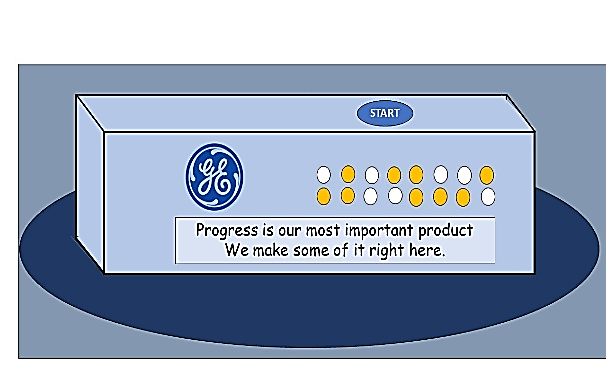Before Alexa: The Little Jewel Pocket Computer
by Bill Flury
If Computers Could Only Talk
In the very early 1960s the computers were huge and were perceived to have superhuman powers. The book, Giant Brains and How they Think was very popular. Futurists made wild predictions about how these giant brains would solve the unsolved and, maybe one day, win at chess.
However, there was a problem. Computers were run by programs The programs describing the problems to be solved had to be punched into cards and fed into the computer. The results came out as printouts depending on the skill of the programmer.
When there as a problem the programmer could not discuss the issue with the computer to resolve the issues. Reaching a satisfactory result was a long and arduous process involving many iterations of the program/run/fix process. Many started looking for a better way to communicate.
ELIZA
A program called ELIZA was developed at MIT to simulate a conversation with a Rogerian psychotherapist. It was created to demonstrate the superficiality of communication between humans and machines. One could type questions and concerns and hit return. Eliza would provide responses constructed by a language manipulation algorithm designed to mimic the responses of s psychotherapist.
When the original ELIZA first appeared in the 60’s, some people mistook her for human. The illusion of intelligence worked best, however, if you limited your conversation to talking about yourself and your life.
ELIZA was not only fun, it planted the idea that, maybe if we worked at it, we could really achieve meaningful conversations between computers and people.
Natural Language Processing
Two years before ELIZA, General Electric opened an Advanced Development Group in Bethesda, MD. The company staffed it with forward thinkers of many types. One team worked on developing new and useful ways to display data from computations (i.e., better ways for the computers to communicate with people). The large screen displays showing statistics graphically on geographic maps that are common today, started there.
A second group was charged with finding a way for humans to talk to the computer in a way that the computer could “understand” correctly. Our Natural Language group was staffed with linguists and programmers and some of us who qualified in both areas.
The challenge was to figure out how bridge the gap between the messiness of human language and the programming precision needed by the computer. We all recognized that the gap was huge and would require many years. We were eager to get underway.
A government agency had given us a contract to begin the work. The first task was to build and load a database of military intelligence that would hold the types of data that intelligence analysts might want to “discuss” with the computer. They gave us huge piles of classified data to load the computer.
At the same time, we started on the vocabulary, grammar and syntax of the language the analysts should use in their dialogue to help the computer find exactly what they were looking for.
The General and the Little Jewel
We got word that the General who was in charge of our contract would be coming to visit soon and we would be asked to explain our work to him. It would be hard because we had nothing tangible to show him. I got an idea. We would build a model computer that would have the ultimate capability that we were striving for – “a computer with which humans could converse and get any desired answer to any question.” I went to Radio Shack and bought some parts and went into my basement and built the Little Jewel Pocket Computer.

Housed in a traditional GE blue box, the Little Jewel (LJ) had a set of lights on the front face similar to those on the consoles of the current “Giant Brains”. On top, was a start button. Operation was simple. Ask a question, press START, watch the lights flash randomly for a moment then stop with the answer indicated by the pattern of “ON” lights.
The Demonstration
The General arrived and after a short tour around the cubicles watching people think, we brought him over to the Little Jewel. We told him this was a very preliminary model, but it would illustrate very well the ultimate product we planned to deliver – a computer that would provide any answer to any question.
The General was a good-humored man in his 50s so he decided to give us a really tough question. He asked, “How old is my wife? The Operator pressed START. The lights flashed then stopped with a distinctive pattern. The General said, “What’s the answer?” The Operator, looking at the lights carefully and interpreting the output, replied, “Sir, she appears to be 38”.
The General seemed very satisfied with that answer and decided to try another. “Will this contract be finished on time? Again, lights flashed, and the answer appeared. “Yes Sir, on government time”.
The Little Jewel gave the General a glimpse into the future. Fortunately for us, the General’s wife was actually 48 and he knew she would appreciate the compliment. Also, now he could visualize what we could we might be able to achieve if he put some more money on the project to keep it going.
Post-Logue
Yesterday, I asked my Little Jewel’s great, great, grandchild Alexa several questions. The lights flashed. Then, it figured out what I wanted to know, found the answers, and spoke them to me in its synthesized voice. I’m sorry the General can’t be here to see how it all turned out.
-END-
References:
http://psych.fullerton.edu/mbirnbaum/psych101/Eliza.htm
ELIZA is an early natural language processing computer program created from 1964 to 1966[1] at the MIT Artificial Intelligence Laboratory by Joseph Weizenbaum.[2]





